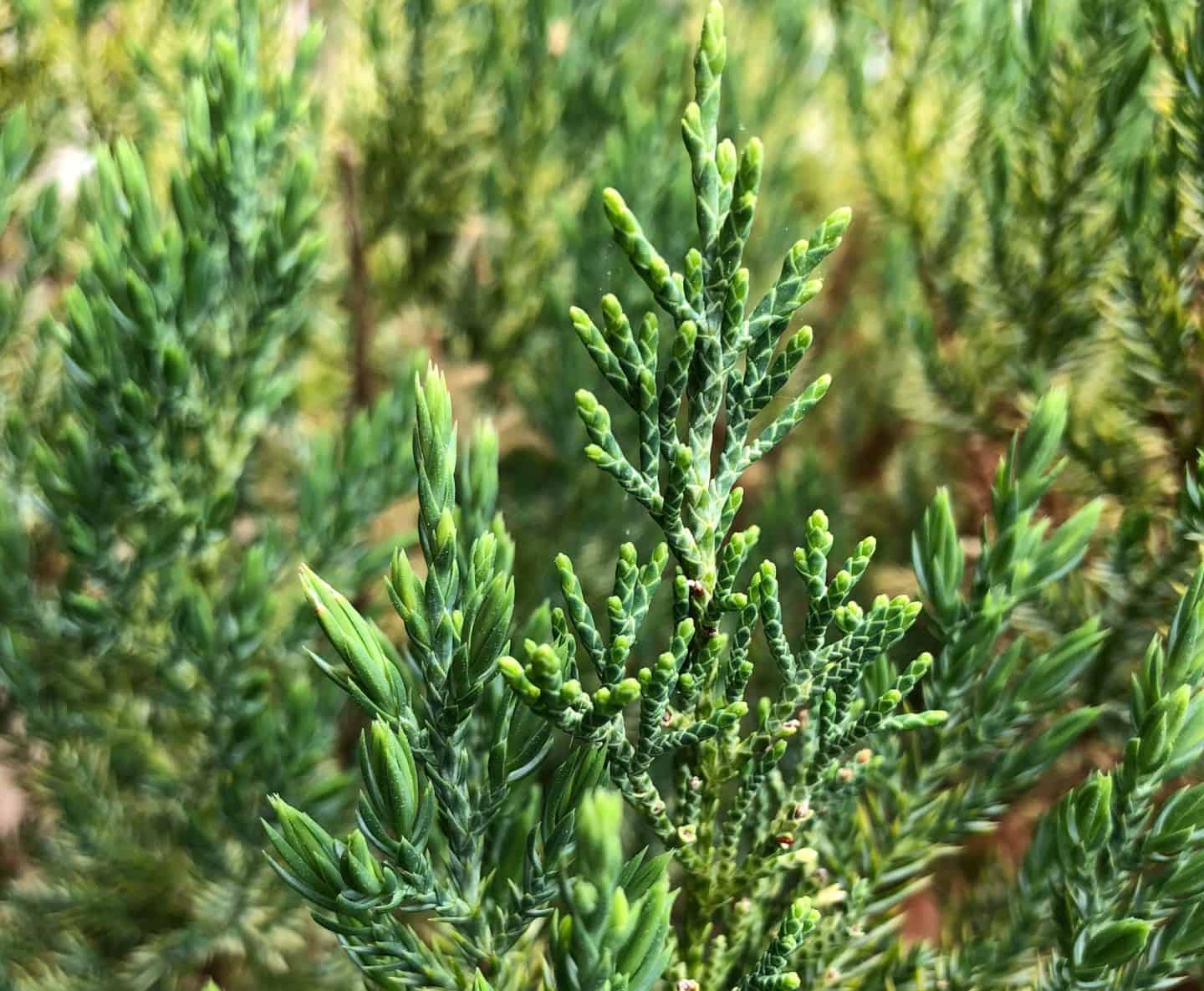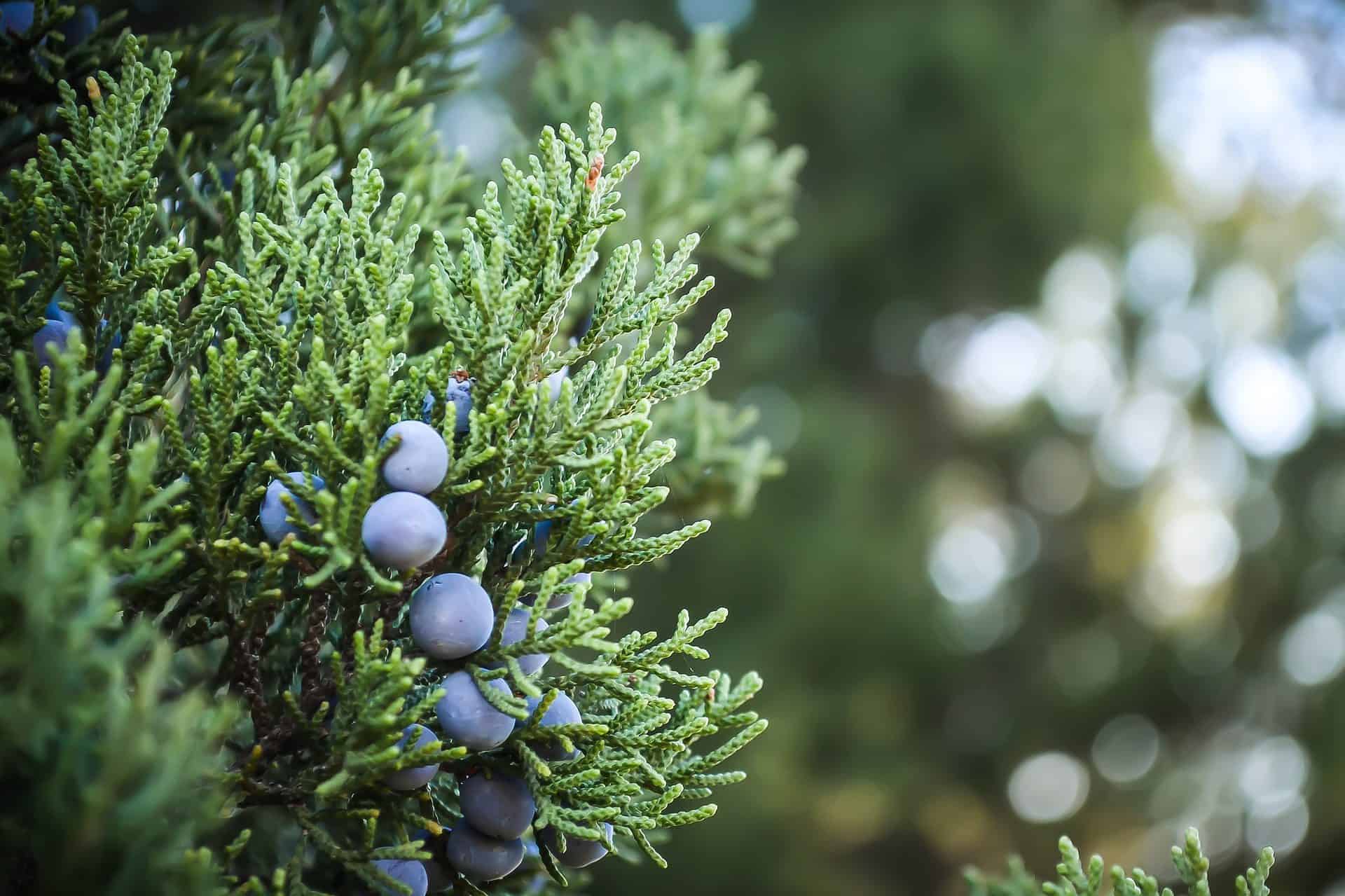No products in the cart.
Table of Contents
Popular for its dense, blue-green foliage, the Juniperus chinensis ‘Blue Point’ is a favorite landscape specimen. It’s used either as a focal point or as a windbreak in a garden. Blue point juniper trees grow an average height of 12 feet tall and 8 feet wide in an upright habit.
The whole shape of the blue point juniper is pyramidal. If left untrimmed, its wayward branches and dense foliage will form a rugged appearance. Hence, most gardeners prefer to trim and form their blue point junipers into conical shapes.
Keep reading to learn some interesting facts about caring for blue point juniper trees in your landscape.
Blue Point Juniper Care

As a low-maintenance species, juniper trees are a common favorite among gardeners and landscapers. Once established, this plant will rarely disturb your peace. The growing requirements are quite easy to achieve.
Soil
Plant your blue point juniper in well-drained soil. The soil must have enough air pockets to hold oxygen so the roots will be able to breathe. Otherwise, your blue point juniper will be in danger of suffering from root rot.
Generally, a sandy type of soil with an acid-to-alkaline pH is most suitable.
Light

Blue point junipers love exposure to the full sun. So, an ideal location is a place where there’s access to direct sunlight. Partial shade is also good, but juniper trees will develop dense and vibrant foliage when the light is bright.
If you want to enjoy the blue-green foliage, plant outdoors under the sun.
Water
Watering your blue point juniper is crucial after the planting. Ensure deep watering during the first month or two, so the plant will develop an extensive root system. To conserve moisture, put mulch around the plant that’s about 1 to 2 inches thick.
Once established, your blue point juniper plant is drought tolerant. You’d need to do supplemental irrigation during hot and dry spells. But generally, they’ll be fine without regular watering.
When soil moisture is consistently high, root rot becomes a problem in juniper trees, especially with poor drainage soil.
Temperature & Humidity

Since blue point juniper thrives in areas under USDA hardiness zones 4 to 9, it can tolerate temperatures as low as -30°F (-34°C). They can also take extreme heat and will do well even when there’s a drought for an extended period.
It’s adaptable to extreme weather conditions. Thanks to its hardy and versatile nature.
Fertilizer
When planting, amend the soil with organic matter such as organic compost and bone meal. Mix them well in the soil before putting the blue point juniper plant in the planting hole. Then, water the plant indoors thoroughly.
Every year, feed your growing juniper tree with a slow-release fertilizer in early spring to give it an extra boost. You’ll notice some new growths will appear after the fertilizer takes effect.
Propagation
Use semi-hardwood cuttings for propagating a blue point juniper.
Cut a healthy-looking stem at least 8 to 12 inches in length.
Remove the leaves on the lower part of the cut portion and create a slit on both sides.
Dip the cutting in a rooting hormone.
Insert the treated cutting into a soilless potting mix. Firm the soil around the cuttings to keep it upright. You may add a stake for support.
Cover the cutting with plastic to create a dome. This method helps retain high humidity around the cutting and therefore prevents it from drying out.
Mist the soil daily.
Wait until the cutting develops its own roots. It will take about four weeks or so.
Once the cutting is vigorous enough, transplant it to a bigger container.
Pruning

Your juniper tree will develop some sideways growth that may affect its conical shape. Prune during summer to trim unwanted growth, damaged branches, and diseased portions. Doing so will improve the overall health of your blue point juniper.
It will also result in dense evergreen foliage.
If you want a spiral blue point juniper, pruning will help achieve that form. However, avoid pruning more than 30% of the tree’s growth. Otherwise, your tree might have trouble producing new growth.
Blue Point Juniper Similar Trees and Varieties
Juniperus conferta ‘Blue Pacific’
The Blue Pacific variety of Juniperus conferta resembles the Blue point juniper in terms of its foliage color. The difference, however, is that its low-growing, only about one foot in height. It’s best for groundcover use.
Juniperus communis ‘Oblonga Pendula’
This species is an irregularly shaped Juniper tree that reaches a mature height of 6 feet tall. Its interesting feature is the presence of pendulous secondary branches with gray-green foliage color.
Juniperus cedrus
J. cedrus is an evergreen tree that may grow up to 100 feet tall. It’s native to the Canary Islands. And its leaves or needles are also blue-green in color, similar to that of blue point junipers.
Blue Point Juniper Common Disease and Pests

Although blue point juniper is rarely infested, they may experience attacks from spider mites, bagworms, mites, and scales. They’re usually treatable with horticultural oils, but if most of your trees suffer, you may need to resort to using pesticides.
Diseases such as root rot, twig blight, and cedar-apple rust may infect your blue point junipers. You can avoid root rotting by improving the soil drainage and watering less frequently. Twig blight is a disease caused by the fungi Phomopsis and Kabatina, and they can be severely damaging.
You must quickly remove the infected twigs so they won’t spread in the nearby parts of the tree. You can use a fungicide if the fungi involved are the Phomopsis.
Cedar-apple rust is another fungi-related disease that may possibly infect juniper trees. It leaves round, woody galls on twigs and small branches during fall. One Spring sets turn into orange, gummy, tentacle-like projections.
You need to prune the branches that have developed galls in order to prevent the spread of infection.
Frequently Asked Questions
Blue point juniper has a moderate growth rate. It grows steadily with an average increase in height of about 6 inches per year.
It can be due to root rot that is caused by overwatering. It’s also possible that your juniper plants suffer from twig blight disease.
Junipers grow dormant during winter. Hence, ensure to water the soil before the dormant season, so it has enough moisture intact. Mulch the soil around the plant to conserve moisture.
If your juniper tree is relatively young, you can cover it with burlap for extra protection.
Plantly offers some relative species of the blue point juniper trees. Don’t forget to check them out.
Whether you want to buy, sell or simply reach out to other plant enthusiasts, Plantly is the right place to be!


